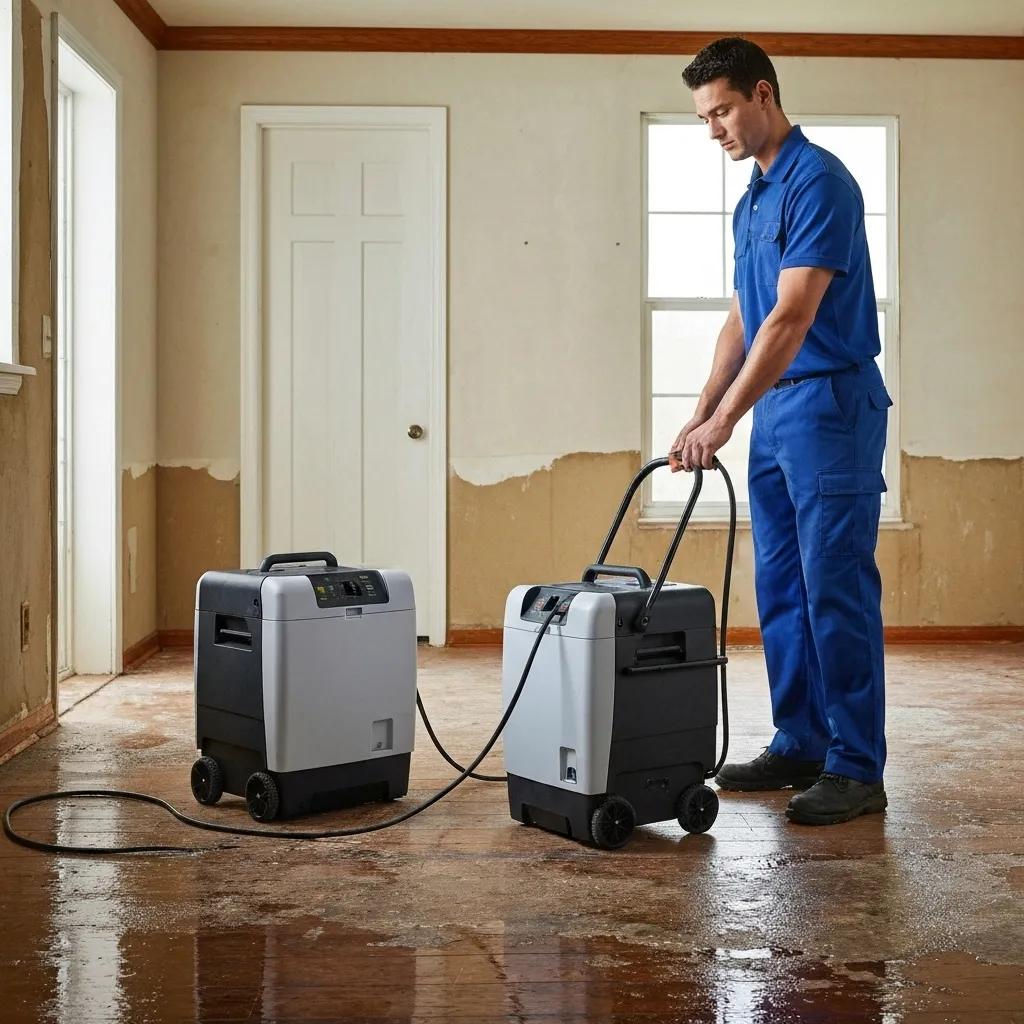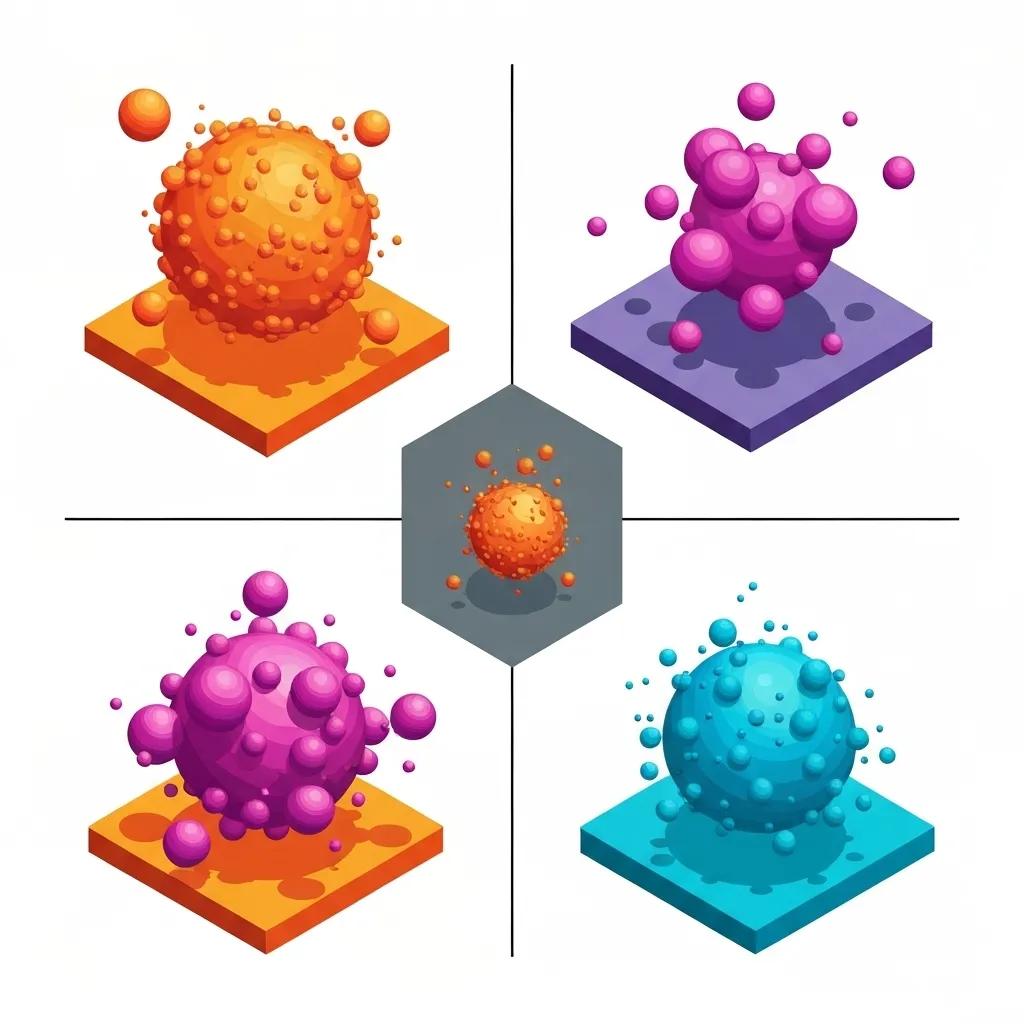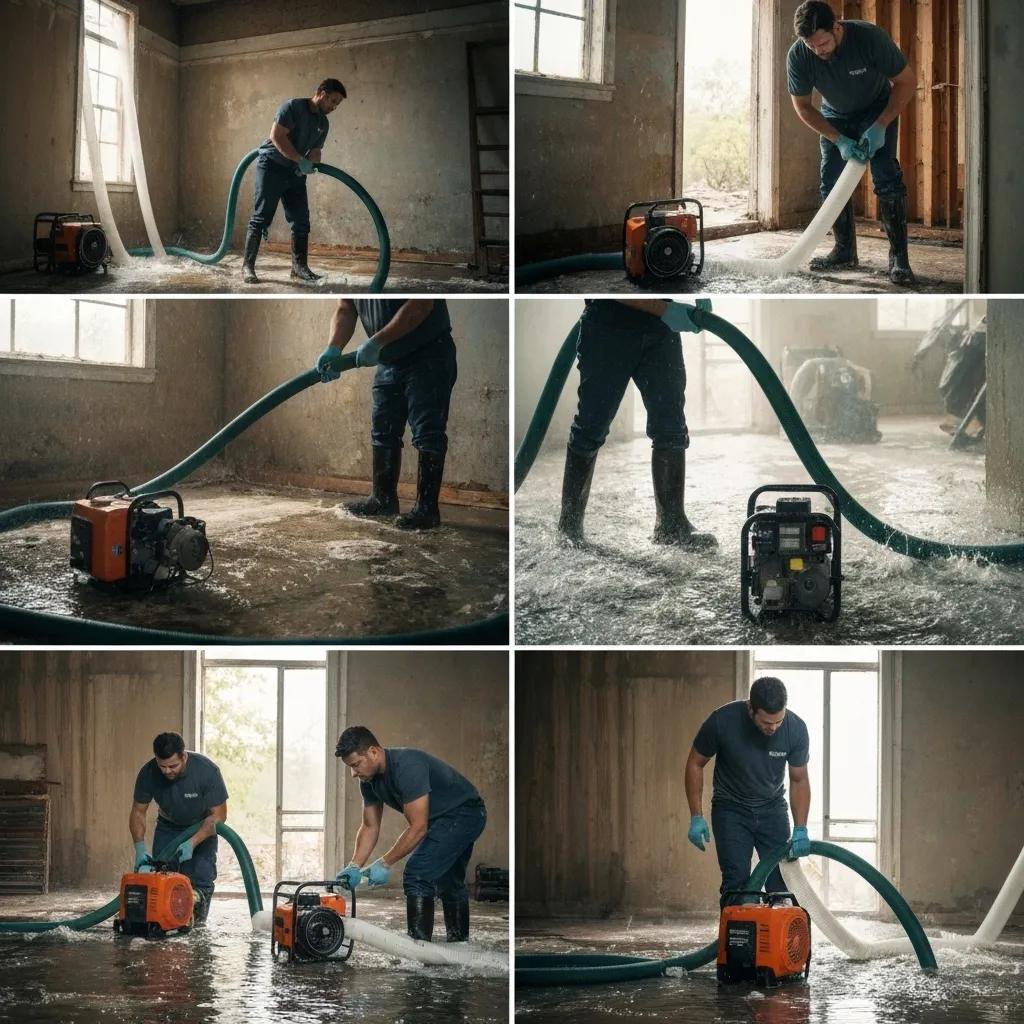
When water breaches your walls and floors, every moment counts—mold can begin its destructive growth within 24 to 48 hours, jeopardizing your home’s structural integrity. This expert guide will illuminate why swift structural drying is paramount, how our professional teams leverage psychrometry to guide drying decisions, and the proven methods and equipment that deliver reliable restoration results. You’ll also gain insight into the meticulous step-by-step drying process, essential strategies for mold prevention, and the distinct advantages of partnering with your local, 24/7 emergency restoration specialists.
Key topics we’ll cover:
Rapid structural drying is the process of efficiently removing moisture from building materials to prevent secondary damage and the proliferation of microbial growth. By swiftly extracting water and reducing ambient humidity, our professionals safeguard vital components like wood framing, drywall, and insulation from warping, decay, and compromise. For instance, initiating drying within the critical first 48 hours effectively prevents mold spores from establishing a foothold on porous surfaces.
Leading authorities like the U.S. Environmental Protection Agency (EPA) and the Centers for Disease Control and Prevention (CDC) underscore the critical importance of prompt drying to avert mold growth following water damage. Both organizations strongly recommend that affected areas be thoroughly dried within 24 to 48 hours to inhibit mold spore germination. Furthermore, they advise maintaining indoor relative humidity levels below 60%, ideally between 30% and 50%, to create an environment that is inhospitable to mold development.
This expert guidance validates the article’s emphasis on the urgent timeline for mold prevention and the specific humidity thresholds required to effectively manage microbial growth after water intrusion.
A clear understanding of the types and severity of flooding is essential for technicians to select the most effective drying approach. This clarity directly informs water damage classification and the specific classes that dictate the necessary remediation steps.
Water damage is classified based on the level of contamination and the extent of its spread, as well as the volume of water intrusion:
Damage classes indicate the scope of moisture penetration:
These distinctions are crucial for determining appropriate extraction methods and setting the psychrometric targets necessary for thorough drying, as detailed in the following section.
The Institute of Inspection, Cleaning and Restoration Certification (IICRC) S500 Standard serves as a foundational industry guideline, defining the three categories of water damage (Category 1: Clean Water, Category 2: Grey Water, Category 3: Black Water) based on their contamination levels. It also outlines four classes of water intrusion (Class 1-4) to categorize the extent of moisture absorption and the complexity of the drying required for affected materials.
This authoritative standard directly supports the article’s comprehensive explanation of water damage categories and classes, providing a recognized framework for understanding various types of water intrusion and their appropriate remediation.
Immediate drying effectively interrupts the moisture cycle essential for mold germination and spread, while simultaneously preventing wood rot and material delamination. By reducing relative humidity to below 40 percent and lowering material moisture content to safe levels, our technicians halt fungal growth and prevent structural weakening. Consistent moisture monitoring is key to identifying hidden damp pockets before they can lead to decay, paving the way for controlled and lasting restoration outcomes.
Even a delay of 24 hours in initiating drying can lead to:
Understanding these risks underscores the critical need for scientifically informed drying procedures, a topic we explore in depth through psychrometric principles in the next section.

Psychrometry is the scientific study of the relationship between air and water, a critical discipline for calibrating drying equipment and accurately monitoring restoration progress. By precisely measuring temperature, humidity, and dew point, our experts can calculate evaporation rates and establish optimal drying targets, ensuring our air movers and dehumidifiers operate at peak efficiency for each unique environment.
Leveraging key psychrometric data empowers our teams to compare real-time conditions against ideal drying parameters, guaranteeing that no residual moisture pockets remain that could trigger mold growth or material damage. This meticulous focus on achieving air-water balance seamlessly integrates with the equipment selection discussed later.
Before deploying dehumidifiers and air movers, our technicians meticulously assess:
Diligent tracking of these variables ensures precise control over the drying dynamics and guides the strategic deployment of our advanced equipment.
Our technicians plot temperature and humidity readings onto psychrometric charts to visualize the complex air-water relationships within the affected space.
| Chart Zone | Characteristic | Drying Objective |
|---|---|---|
| Saturation Curve | Air is at 100% relative humidity | Initiate dehumidification to effectively remove excess vapor |
| Evaporation Buffer | High temperature, moderate humidity levels | Maximize the rate of evaporation |
| Conditioning Zone | Low humidity, moderate temperature conditions | Stabilize materials at safe, acceptable moisture levels |
Mapping collected data to these specific zones allows technicians to fine-tune equipment settings, strategically alternating between extraction and dehumidification phases until all materials reach their equilibrium moisture content. A thorough understanding of chart readings directly informs the selection of our core drying methods.

Professional structural drying utilizes a sophisticated combination of water extraction, precisely directed airflow, and advanced moisture removal techniques to restore structural elements with maximum efficiency. By sequencing these methods based on the sensitivity of the affected materials, our technicians avoid unnecessary demolition and significantly reduce the overall restoration timeline.
The critical first step involves the immediate removal of standing water and surface moisture using specialized equipment:
Effective extraction dramatically lowers the initial water load, allowing our air movers and dehumidifiers to concentrate on removing moisture that has become bound within the construction materials.
In-place drying methods are designed to preserve structuralIn-place drying methods help protect structural parts. They do this by placing equipment right on or near water-damaged materials. Targeted drying may involve drilling small access holes for cavity drying or utilizing specialized moisture-permeable mats placed on hardwood floors to draw moisture out from tightly bonded layers. These advanced techniques minimize the need for invasive repairs and maintain the integrity of building materials while precisely controlling the drying rate.
Encapsulating affected zones with specialized plastic barriers and establishing negative air pressure within these contained areas effectively directs airflow precisely through the damaged materials. This crucial step prevents cross-contamination of unaffected areas and significantly accelerates moisture removal. This approach also isolates potential contaminants from Category 2 or 3 water intrusions, safeguarding other parts of the property and enhancing overall drying efficiency.
Thermal drying units are employed to carefully raise the ambient temperature within affected cavities and dense materials, thereby increasing evaporation rates. By synergistically combining controlled heat with directed airflow, our technicians can target deeply bound moisture within concrete slabs and behind drywall panels, achieving uniform drying without causing excessive surface evaporation that could lead to warping or other damage.
Selecting the appropriate equipment is paramount to ensuring efficient moisture removal from both the air and the building materials themselves. A carefully balanced combination of high-performance dehumidifiers, powerful air movers, and precise monitoring tools delivers consistent, reliable results tailored to the specific drying environment.
Professional restoration teams utilize three primary categories of industrial dehumidifiers:
Each type is selected to address specific moisture conditions and energy requirements, allowing our technicians to adapt strategies dynamically as the drying process progresses.
High-velocity axial and centrifugal fans are strategically positioned to direct powerful airflow across wet surfaces. This action effectively strips away the boundary layer of humid air, transporting moisture-laden air toward dehumidifiers for removal. By creating uniform and optimized airflow patterns, air movers can dramatically enhance evaporation rates, reducing overall drying times by up to 50 percent compared to passive drying methods.
Accurate assessment and ongoing monitoring of moisture levels are critical and rely on specialized tools:
These advanced tools ensure that no hidden pockets of dampness remain undetected, guiding our technicians toward complete and thorough structuralrestoration.
Specialized equipment is crucial for addressing hard-to-reach moisture in complex and confined spaces:
| Drying System | Application | Benefit |
|---|---|---|
| Floor Mat Systems | Ideal for hardwood and tile surfaces | Directly wicks moisture from the subfloor upwards |
| Cavity Injection Systems | Used for wall and ceiling voids | Targets enclosed spaces without requiring destructive cutting |
| Insulation Drying Systems | For wet insulation removal and drying | Dries or facilitates the replacement of saturated fiber insulation |
By deploying these advanced systems, our professionals achieve comprehensive drying even in the most challenging structural assemblies, effectively preserving the integrity of the building’s structure and finishes.
A meticulously systematic workflow ensures that every stage of the drying process is executed with precision, delivering predictable results and proactively preventing the emergence of hidden moisture issues.
Our process begins with a thorough visual inspection, complemented by the use of advanced moisture meters to create a detailed moisture map. This map meticulously documents all wet zones, identifies material types, and records relative humidity levels. This comprehensive map serves as the essential baseline for selecting the appropriate equipment and establishing precise psychrometric targets, ensuring a data-driven and effective drying plan.
Following the initial extraction phase, which significantly reduces bulk water levels, air movers are strategically positioned to maximize airflow across all wet surfaces. Dehumidifiers are then placed centrally to efficiently process the moisture-laden air. This carefully calibrated configuration balances airflow dynamics and dehumidification capacity to achieve optimal drying velocity.
As moisture levels progressively decrease, the psychrometric conditions within the environment naturally shift. Continuous monitoring by our technicians allows for the recalibration of dehumidifier output and the strategic repositioning of air movers to address newly identified damp areas. This adaptive approach is crucial for preventing under-drying and ensuring consistent, effective drying progress across all affected materials.
Once all moisture readings consistently meet established safe thresholds, a final, comprehensive moisture survey is conducted. This verification step confirms that material moisture content and ambient humidity levels align with industry restoration standards. Our technicians then remove all equipment, reinstall any necessary system components (such as insulation or trim), and thoroughly sanitize all affected surfaces to finalize the restoration process.
Thorough and rapid structural drying is the most critical defense against microbial colonization following water damage, as it deprives mold spores of the essential moisture they need to germinate and thrive.
By systematically lowering material moisture content to below 15 percent and reducing relative humidity to under 40 percent, structural drying effectively eliminates the key environmental conditions that mold requires for growth.
Research published in Restoration & Remediation Magazine highlights specific moisture content thresholds critical for mold growth on various building materials. For example, mold can begin to colonize wood when its moisture content exceeds 16%. This scientific data underscores the absolute necessity of reducing material moisture to safe, predetermined levels to effectively prevent fungal proliferation and maintain the structural integrity of affected components.
This citation provides a specific, verifiable material moisture content threshold, reinforcing the article’s crucial emphasis on precise drying targets as the key to effectively preventing mold and structural decay.
Adopting these proactive practices helps sustain a dry environment and preserves indoor air quality, reinforcing the long-term benefits achieved through professional structural drying.
Choosing a local expert with unwavering, round-the-clock availability ensures not only a rapid response but also technical precision and seamless support throughout your entire restoration journey.
Our team of certified technicians possesses an in-depth understanding of Middle Tennessee’s unique climate and common building practices. This specialized knowledge of regional construction materials and typical humidity patterns allows us to develop highly precise drying strategies perfectly suited to local conditions.
Through the immediate dispatch of our experienced crews and specialized equipment, we significantly limit the duration of water exposure. This rapid intervention drastically reduces the risk of mold infestation and structural decay. Our 24/7 availability guarantees that expert help arrives precisely when you need it most, right after flooding occurs.
We meticulously document every aspect of the restoration, providing a detailed claims package that includes moisture mapping, equipment logs, and comprehensive drying reports. Our dedicated team liaises directly with your insurance adjusters, streamlining the approval process and ensuring you receive the necessary coverage without administrative hassle.
Structural drying forms the essential foundation of reliable water damagerestoration and effective mold prevention. By expertly combining psychrometric science, targeted drying methods, and specialized equipment within a clear, meticulously monitored process, homeowners in Murfreesboro, Nashville, and the surrounding areas can confidently restore their properties. For expert, 24/7 structural drying services backed by unparalleled local expertise and seamless insurance assistance, place your trust in the certified professionals at 24 Hour Flood Fighters.
water damage drying techniques, structural drying equipment, drying techniques for water damage
water damage drying techniques, structural drying equipment, drying techniques for water damage